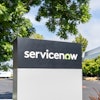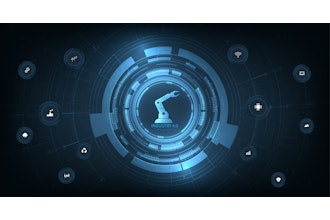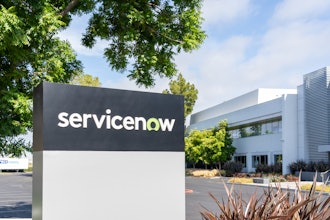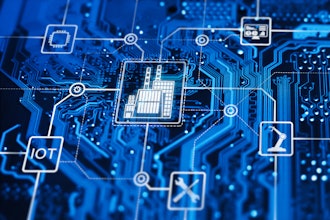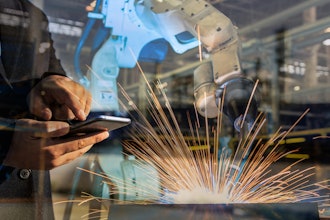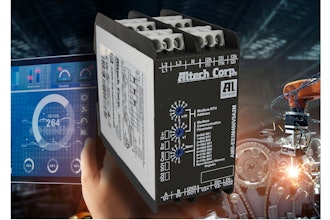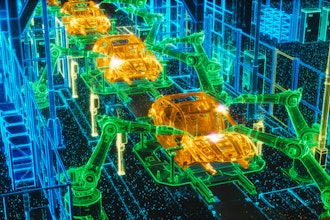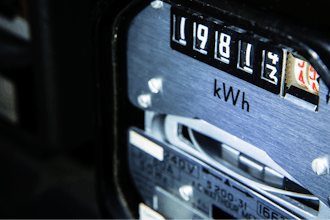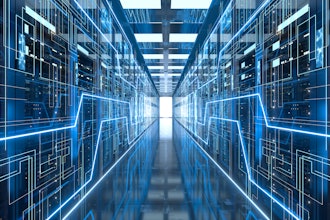A blockchain is a decentralized and conveyed computerized record that is utilized to record exchanges crosswise over numerous nodes so the record can't be modified retroactively without the modification of every single ensuing square and the plot of the system. This makes blockchain an incorruptible digital ledger of economic transactions that can be programmed to record not just financial transactions but virtually everything of value.
Picture a decentralized database of records or public register of all transactions or digital dealings that were performed and shared among various participants. Every single transaction available in this public record is confirmed by every players in the system. And, once logged into the system, the information can never be wiped as the blockchain comprises a certain and verifiable record of every single transaction that ever took place.
The blockchain avails the possibility of revolutionizing the digital world by permitting a worldwide consensus where every single online transaction, regardless of when it took place and including digital monies can be confirmed at any time in the future. Also, it does not compromise the privacy of the digital assets or parties in the transaction. The dispersed consensus and privacy are perhaps the two most attractive characteristics of the blockchain technology.
Importance of Blockchain
The most remarkable advantage accrued from the blockchain is the transparency of the system. Every information is entrenched within the system which can be explicitly described as public. Every data embedded in this network cannot be corrupted as varying any unit of data within the blockchain can only happen if an enormous amount of computing power was used to override the entire system.
Additionally, since blockchain is decentralized, it is impossible for one individual in the system to modify or tamper with the information. And there is also no need for one party or central authority to authorize or process transactions. This property of blockchain will certainly democratize currencies and other forms of decision making.
The ‘Open source’ nature of blockchain makes it a very public and transparent mode of preserving records; eliminating any form of operator tampering. Another promising application resulting from this transparency could be seen within governance. Imagine if election results were entirely transparent, enabled by blockchain technology? It would go a long way in eliminating allegations of tampering or, where applicable, eliminate the meddling.
Asides being used to transfer cryptocurrencies (like bitcoin, ethereum, ripple, litecoin, etc.; the blockchain technology has numerous potential use cases, let’s take a look at two very vital applications below:
Banking & Finance
Blockchain technology is not difficult to comprehend at its roots. Fundamentally, the system exists as a linked database made up of entries that must be encrypted and confirmed. It's essential to envision it as a solidly encrypted and verified shared document, and each record in this sheet hinge on a logical relationship to all the other entries. In other words, blockchain provides a way to securely and efficiently create a tamper-proof log of sensitive activity.
These qualities make blockchain excellent for international payments and also money transfers. Large commercial banks have numerous retail clients who would benefit from more efficient and cheaper payments, particularly in the area of international transfers. Blockchain technology decreases the cost of these transfers by reducing the necessity for banks to manually resolve transactions and eliminating the need of intermediaries.
It’s exciting to contemplate the changes that might occur with our trading platforms if they relied on blockchain-based technology. There’s no doubt that the risk of operational errors and fraud would be dramatically reduced. NASDAQ and the Australian Securities Exchange are already exploring blockchain solutions to reduce costs and improve efficiencies.
Supply Chain Management
Blockchain's undisputable ledger makes it well suited for tasks such as tracking products as they move up and down the supply chain. Using a blockchain provides several possibilities for companies moving these products. Blockchain provides a novel and dynamic way of consolidating and tracking data and putting it to use.
Additionally, since supply chains are becoming progressively more globalized, growing more complex, with raw materials and goods being conveyed across far-reaching geographical locations. Distributors face an especially hard time as extreme global weather patterns in recent years disrupt their regular supply lines. Procurement teams are also left to make tough choices about where to source, have to work with unfamiliar vendors amid less visibility into the complete supply chain. Consequently, this reduced visibility can create many challenges for unsuspecting companies, including being culpable for food fraud or just losing track of their shipments.
Supply chain visibility is not just crucial for tracking food fraud; it is also vital in identifying spoiled goods. Imagine if vendors and manufacturers alike could ensure that there were no clogs in their supply chain and also provide transparent insight into how that food was treated in the course of transportation and storage? This is the questions that have come up amidst increasing interest to deploy the open source nature of blockchain for transparency purposes as it relates to food. Wal-Mart is trialling blockchain to address this exact problem. By tracking the provenance and supply chain journey of individual packages of produce and meat, they aim to pinpoint and prevent outbreaks of illness. A blockchain database enables Wal-Mart to acquire vast amounts of supply chain data that the company can use to deliver food to stores more efficiently, reduce spoilage and waste, and cut costs.
To conclude, blockchain has several advantages. Firstly, it is distributed: it runs on computers around the world, so there is no central database to hack. Secondly, it is public: Anyone can view it at any time because it resides on the network. And thirdly, it is encrypted and secured: It uses heavy-duty encryption to maintain security.
Blockchain transactions are continuously verified, cleared, and stored by the network in digital blocks that are connected to preceding blocks, thereby creating a chain. Each block must refer to the preceding block to be valid. This structure permanently time-stamps and stores exchanges of value, preventing anyone from altering the ledger. To steal anything of value, a thief would have to rewrite its entire history on the blockchain. Collective self-interest ensures the blockchain’s safety and reliability. Therefore, I think blockchain provides a powerful mechanism for blowing traditional and centralized models, such as that of the corporation, to bits, and this would increase the speed of transactions and free from frauds etc. Hence, It is safe to say that with the promise of providing safe and transparent transactions, blockchain seems poised to be one of the pillars of the digital world in the nearest future.
Shailendra Kumar is Vice President and Chief Evangelist for Analytics and Leonardo at SAP in APJ.




